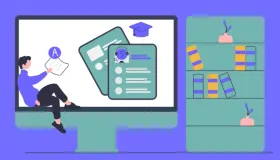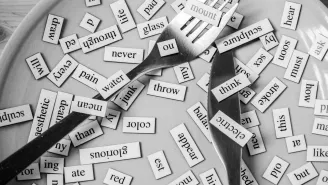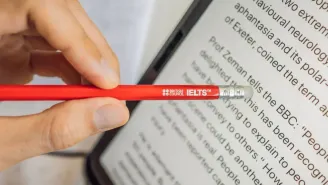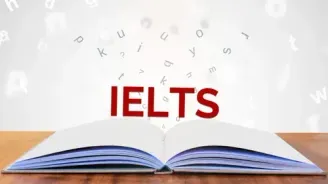The Power Of Play Reading Answers Passage
The Power Of Play Reading Answers Passage
Paragraph A. Almost every child in the world enjoys playing. Children are very driven towards playing that they can play in any state of affairs, like when they don’t have real toys or when active encouragement is not given by parents. For children, the pastime is running, dissembling and building. Researchers and educators perceive that children’s communal, intellectual, physical, and behavioural development all benefit from partaking in these kinds of extracurricular facilities. Undeniably, playtime holds a crucial role in the growth of a healthy child. Playing was recognised as a fundamental right by the United Nations High Commission on Human Rights in 1989.
Paragraph B. Although experts continue to make a rational argument for the noteworthiness of play in children’s lives, there is a decline in the actual time children spend playing. Playing time has decreased by eight hours a week compared to two decades ago (Elkind 2008). Test preparation has displaced play in elementary and middle schools due to an increase in academic demands, and flashcards and educational ‘toys’ are marketed to parents who really want to give their toddlers forewarning. A deceitful paradox between play and learning is created by our society.
Paragraph C. This resulted in their early experiences with play, children developing a wide range of abilities, including self-control, social concession, problem-solving, and a wide pasture of scientific and mathematical knowledge that will serve them throughout their lives. Adults also play a vital role in helping children learn via play.
Paragraph D. Researchers and theorists who study play still can’t really agree on a formal definition of what it is. Definitions ambit from specific descriptions of distinct types of play, such as physical, construction, language, or symbolic play (Miller & Almon, 2009), to these broad characteristics that are designed to capture the core of all play behaviour based on analysis and attitudes (e.g. Rubin et al. 1983).
Paragraph E. Most concepts of play concentrate on some key characteristics. Play is rendered as ‘something done only for the thrill of doing it’ by Stuart Brown, the founder of the National Institute of Play. To be more precise, he says that it ‘appears desultory, generates pressure and joy, [and] reaching the next level of mastery’ (as quoted in Tippett 2008). In the same way, in 2009, Miller and Almond said that play incorporates ‘Initiatives that are freely selected and directed by children and emerge from intrinsic desire’. Generally, this array of behavioural and dispositional parameters is used to describe play-along perpetuity as being more or less playful (e.g. Rubin et al. 1983).
Paragraph F. Play is gratifying: Activity must be enjoyed by children, or it’s not a play. It is substantially motivated: A child’s play is prompted only by the pleasure it provides. It has no extrinsically motivated purpose or ambition. Play is process-lucid: When children play, the meaning is more crucial than the ending. It is candidly chosen, impromptu and voluntary. If a child is under pressure, they will not anticipate play as an activity. If a child is under oppression, they will not anticipate play as an activity. Play is actively engrossed: Physical and/or mental engagement is a prerequisite for players in the activity. Play is metaphoric. It consolidates make-believe.
Paragraph G. Children’s playful behaviour can range from 0% to 100% playful, according to this perspective. In determining playfulness Rubin and colleagues did not assign greater weight to any one dimension; however, it had been suggested by other researchers that process orientation and lack of evident functional purpose may be the most crucial features of play (e.g Pellegrini 2009).
Paragraph H. Play, from the perspective of a continuum, might be combined with less frivolous motives and attitudes, such as work. Work, unlike pleasure, is usually not considered joyful and is extrinsically motivated(i.e. it is goal-oriented). According to Researcher Joan Goodman (1994), hybrid forms of work and play are not detrimental to learning; rather, they can provide optimal learning environments. For example, a child may be actively engaged and intrinsically motivated while participating in a tough, goal-directed exercise set up by their teacher. The child’s motivation, together with adult guidance, can generate robust chances for joyful learning at this midpoint between play and work.
Paragraph I. A recent study suggests that adults may help children’s learning while keeping a lighthearted approach in interactions known as ‘guided play’ (Fisher et al. 2011), which is considered to be significant. The adult’s role in play varies as a function depending on their educational goals and the developmental level of the child (Hirsch-Pasek et al. 2009). There are two types of guided play. Adults can enrich a child’s environment at a very basic level by offering things or experiences that encourage components of a curriculum. Parents or other adults can help children’s play by joining in the enjoyment as a co-player, asking insightful questions, commenting on children’s discoveries, or promoting further investigation or new facets to the child’s activity in the more direct form of directed play. Although regulated play can be somewhat structured, it must also be child-centred (Nicolopoulou et al. 2006). Play should be motivated by the child’s own desire.
Paragraph J. In a child-centred approach to playful learning, both free and guided play are vital components. Free play that is intrinsically motivated provides the child with the true anatomy, whereas guided play, which is an avenue, allows parents and educators to provide more targeted learning experiences. In any scenario, children should be deeply invested in their own play, which should be primarily led by the children themselves.
Let’s explore the questions and answers of The Power Of Play Reading passage.
Also Read: IELTS Reading Tips & Tricks 2024: Techniques for Band 9
The Power Of Play Reading Answers with Sample Questions
Have you read the passage? Now, take the test and find The Power Of Play Reading Answers! Try to answer these questions by yourself before you sneak a peek at the answers given below.
Check Out Top 20 IELTS Reading Practice Test Questions with Answers
Below are some top 20 free IELTS Reading Practice test online questions with detailed answers to enhance your IELTS preparation online. We have provided sample passages for each test type for your reference.
- What Is Exploration Reading Answers
- Effects Of Noise Reading Answers
- The Discovery Of Baby Mammoth Reading Answers
- The Dead Sea Scrolls Reading Answers
- The Ring-Tailed Lemur Reading Answers
- Why We Need To Protect Polar Bears Reading Answers
- Nutmeg A Valuable Spice Reading Answers
- What Is Meaning Reading Answers
- Cutty Sark Reading Answers
- The Step Pyramid Of Djoser Reading Answers
- South Pole Adventurer Reading Answers
- The Future Of Work Reading Answers
- Ambergris Reading Answers
- Trees In Trouble Reading Answers
- Could Urban Engineers Learn From Dance Reading Answers
- The Flavour Of Pleasure Reading Answers
- The Value Of A College Degree Reading Answers
- Why You Should Delegate Tasks To Team Members Reading Answers
- Corporate Social Responsibility Reading Answers
- Forest Management In Pennsylvania USA Reading Answers
- Making Time For Science Reading Answers
- Online Roommate Finder Toronto Reading Answers







